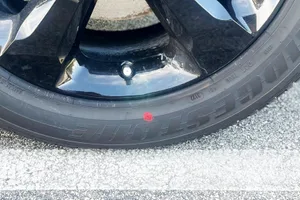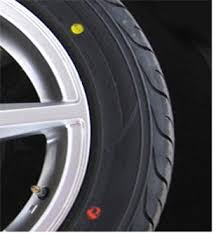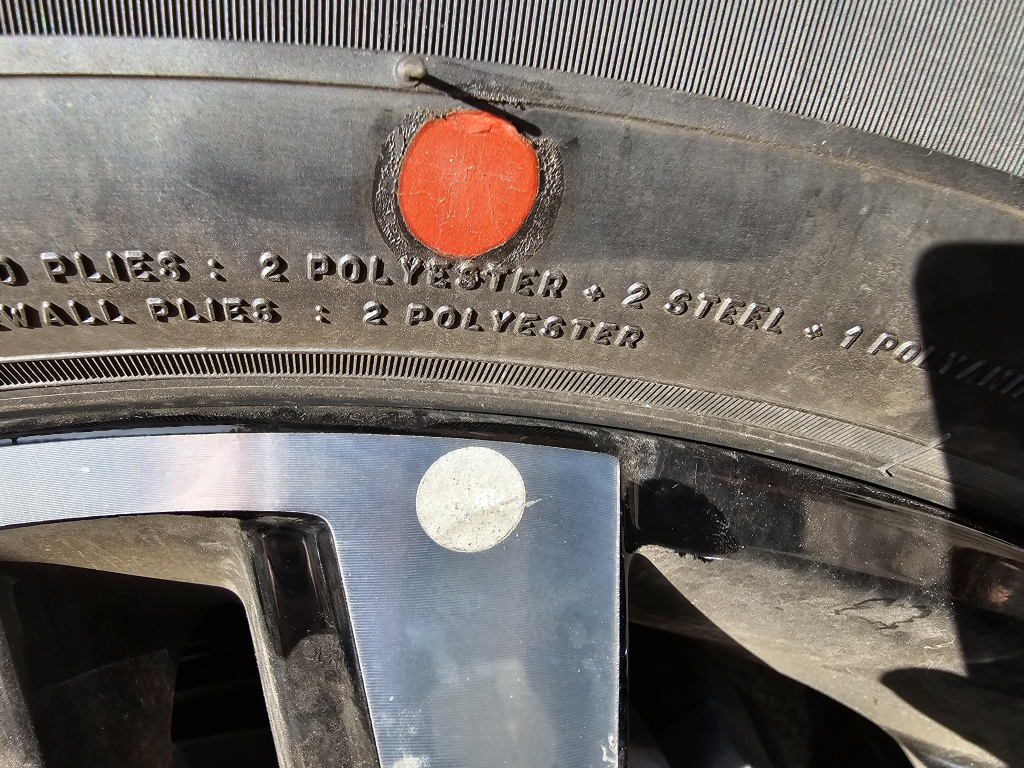If you recently installed new tires, you might have noticed red and yellow dots on the sidewalls. These markings are perfectly normal, but what do they mean? Let’s break it down.

Do These Dots Mean Something Is Wrong?
Many drivers assume these colored dots indicate tire defects, manufacturing dates, or sale promotions. However, none of these assumptions are correct. These dots actually serve a crucial purpose in balancing and installing your tires properly. Since manufacturing a perfectly round and balanced tire is nearly impossible, these markings help technicians optimize tire alignment and balance, ensuring a smoother ride and better vehicle performance.
Understanding Tire and Wheel Assembly
When a tire (the rubber component) is mounted onto a wheel (the metal rim), it creates a tire/wheel assembly. These dots assist technicians in positioning the tire in the best way possible to minimize imbalance and improve vehicle safety.
Where Are the Paint Dots Placed?
Each dot has a specific meaning related to the tire’s weight and shape:
- Yellow Dots: These indicate the tire’s lightest point. The yellow dot should align with the valve stem, which is typically the heaviest part of the wheel. This helps compensate for weight discrepancies and improves balance.
- Red Dots: These mark the tire’s flattest point—its lowest spot. This dot should be aligned opposite the wheel’s highest point, which is usually identified by a notch or another colored mark on the wheel itself.
If a tire has both a red and yellow dot, the red dot takes priority when balancing the tire.
Why Are These Tire Dots Important?
These markings help eliminate inconsistencies in the tire’s construction that could lead to vibrations when driving. Unbalanced tires can negatively impact ride quality, fuel efficiency, and braking performance. More importantly, vibrations at high speeds can make your vehicle harder to control and increase stopping distances, putting your safety at risk.
A poorly balanced tire can also lead to uneven wear, reducing the lifespan of your tires. Since the contact patch—the part of the tire that touches the road—is only about the size of your hand, even small imbalances can make a big difference.

What Does Wheel Balancing Do?
Wheel balancing is a process where the tire/wheel assembly is spun to pinpoint imbalance points. Weights are then added to counteract these imbalances, ensuring a smooth roll. Here’s why it’s essential:
- Unbalanced tires develop bald spots faster.
- Proper balancing extends tire life.
- It reduces unnecessary wear on suspension components.
- It prevents vibrations that make driving uncomfortable and unsafe.
There are two main types of wheel balancing:
- Dynamic Balancing: Weights are added to eliminate tire hop and wobble.
- Match-Balancing: This method pairs the tire’s lowest point with the wheel’s highest point for a better fit and smoother ride.
If your wheels do not have manufacturer markings for balancing, ask your technician about match-balancing to ensure proper alignment.

What Causes a Tire To Become Unbalanced?
Even perfectly installed tires can become unbalanced over time. Common causes include:
- Regular tire wear changes the weight distribution.
- Incorrect tire pressure (over or under-inflation).
- Misalignment leads to uneven wear.
- A wheel weight falls off after installation.
- An improper tire or wheel repair.
- Valve stem replacements causing weight shifts.
- Flat spots forming after the car sits idle for too long.
- Hitting potholes or curbs, which can bend the wheel.
To prolong tire life and maintain balance, check tire pressure regularly and rotate your tires every 5,000 to 8,000 miles. If you notice vibrations while driving, it’s a clear sign your tires need balancing.
Final Thoughts
The red and yellow dots on your tires aren’t just random markings—they play a crucial role in optimizing tire installation and balancing. By aligning them correctly, technicians can reduce tire vibrations, improve handling, and extend tire lifespan. If you ever notice these dots wearing off, it may be time for a tire inspection to ensure your vehicle remains safe and efficient on the road.